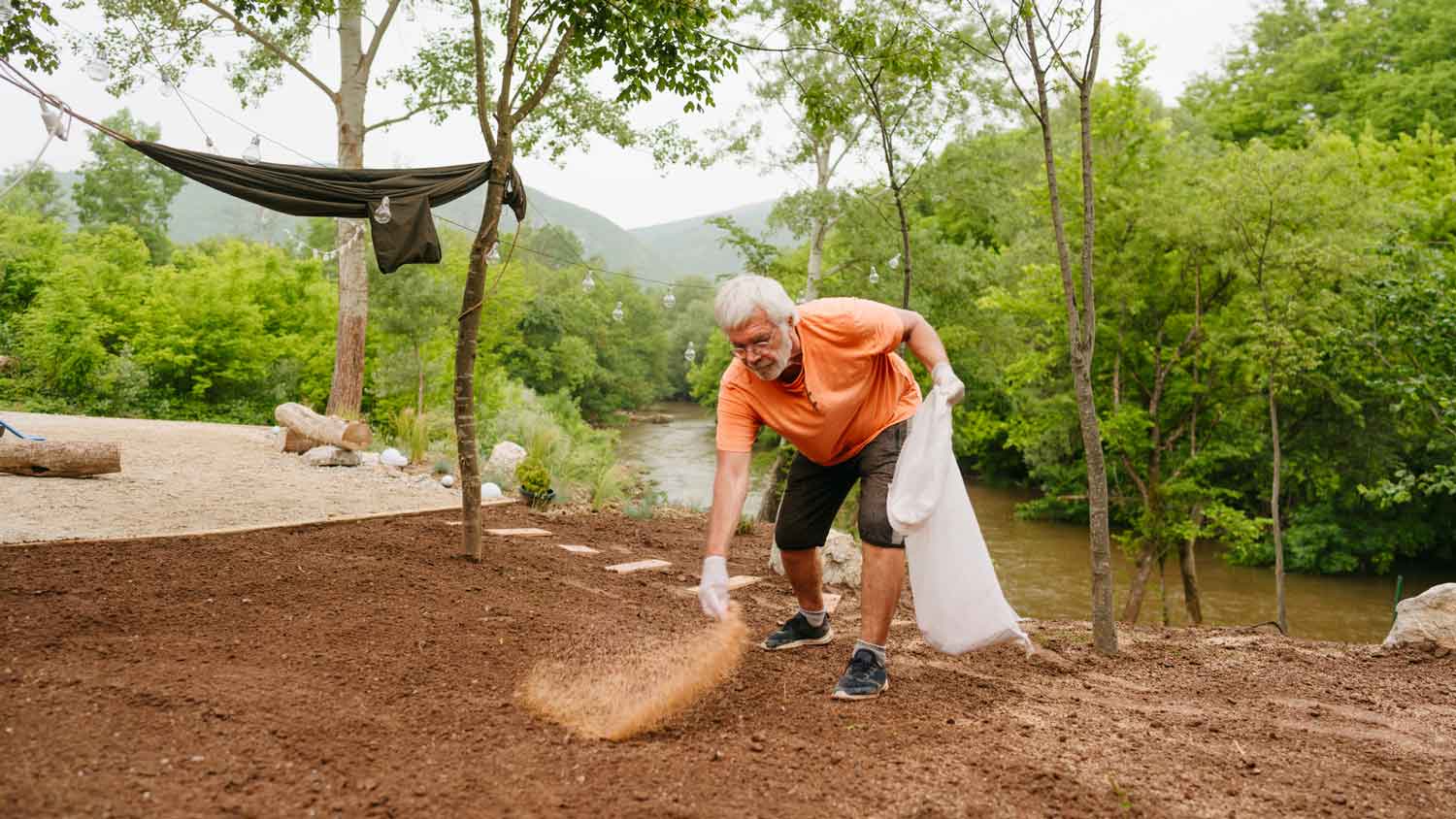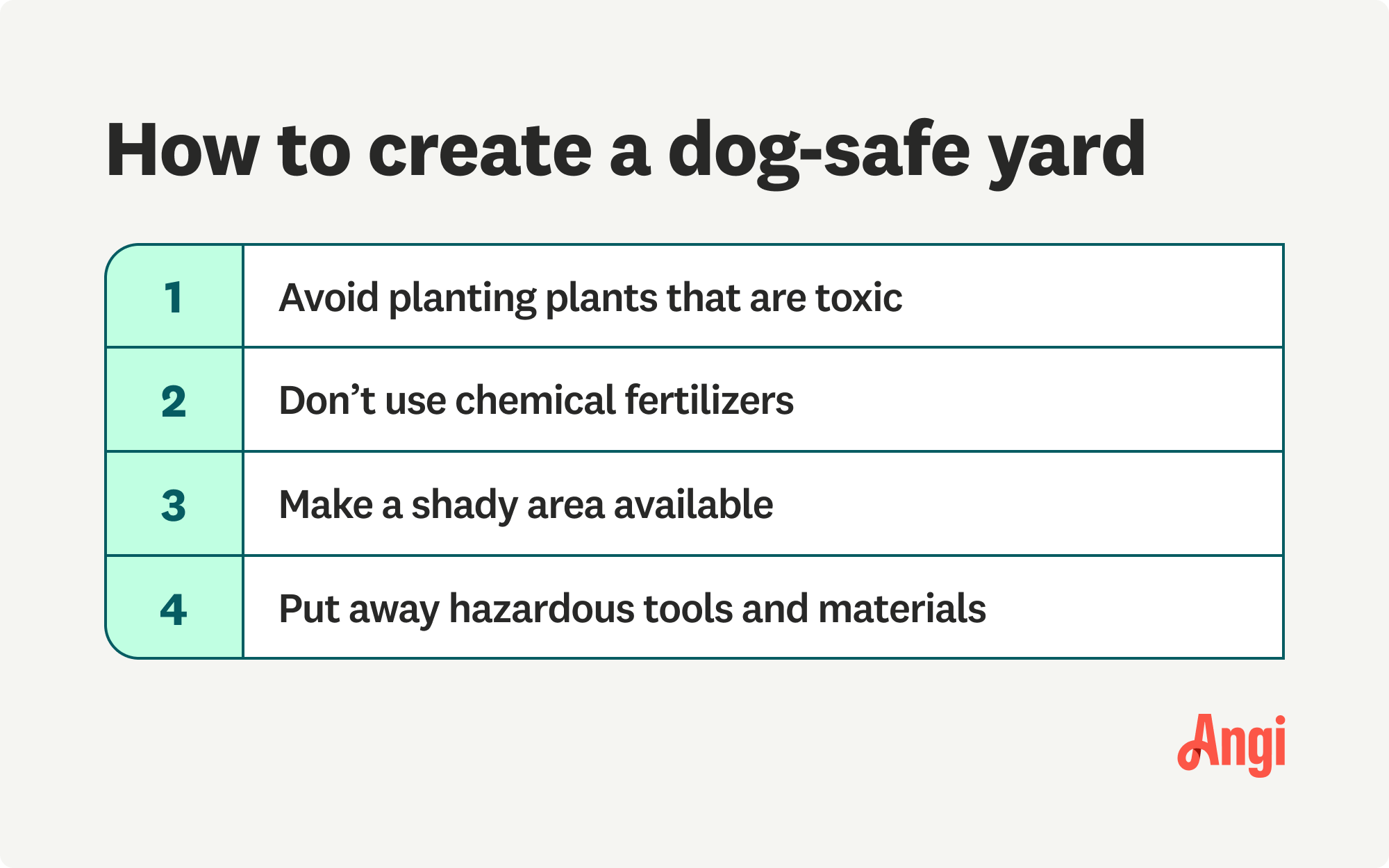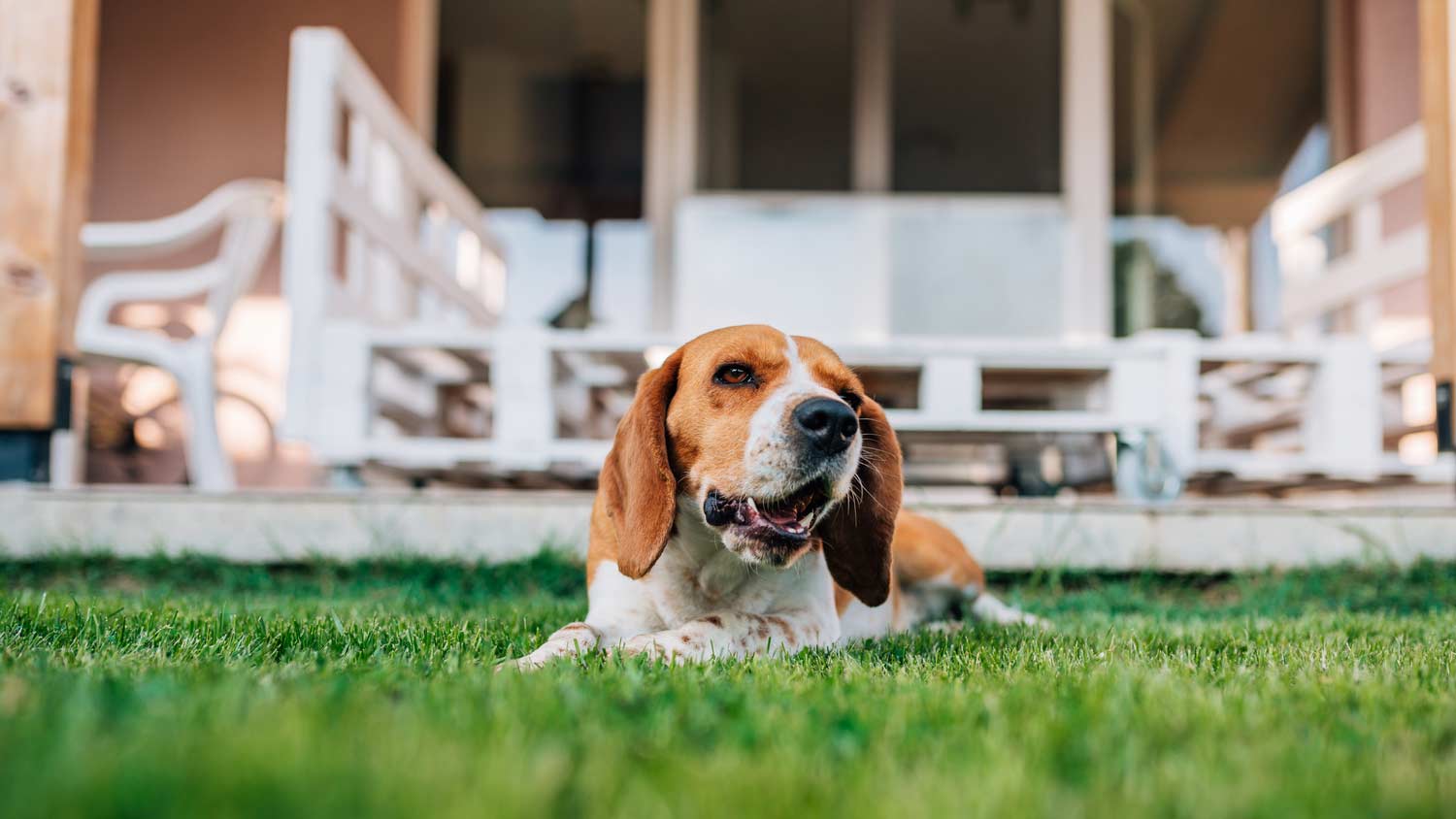
Your total lawn care cost depends on several factors, including the type of service and lawn size. Our guide will cover what you can expect to pay for lawn care.
You don’t have to give up your dogs or your lush lawn


You can have both—dogs and a beautiful lawn.
You’ll have to adapt to your dog’s needs.
Maintaining a healthy, hardy lawn is the key.
Limit or avoid harsh lawn chemicals.
Maintaining a beautiful lawn and owning a furry dog friend aren’t mutually exclusive. However, having both does require a bit of effort on your part. Follow these easy tips and tricks to learn how to grow grass with dogs so your family—and your pup—can enjoy your backyard to its fullest.
First things first—to maintain a gorgeous lawn, it’s best to start with one. But you’ll need a strategy to allow your grass to live its best life. Use plastic or wire fencing to isolate an area of your lawn where the dog won’t be allowed for a few weeks.
Within the fenced area, rake away dead grass and replace it with a mix of potting soil and a hardy variety of grass seed. Allow the new grass to grow for several weeks, then move the fencing to the next area to repair. Continue until the entire lawn is back to a good starting point.

You’ll need to grow hardy grass varieties to create a dog-friendly yard. You won’t have to tear up your lawn and start over. Simply add overseeding your yard with fescue, Kentucky bluegrass, Bermuda, or perennial ryegrass to the list of your regular lawn maintenance.
If you feel daring and don’t mind a few plants that aren’t grass in your yard, adding a little clover or allowing a few weeds to pop up can help use up some of the excess nitrogen your dog leaves behind in urine.

The trick to keeping your yard looking good while also allowing your pet the freedom to enjoy it lies in creating an environment where both will thrive. Here are some things to remember, whether you’re a lawn DIYer or you hire a local lawn care service to maintain your yard.
Mow less often: Reduce your mowing frequency. Taller grass and longer roots are hardier and healthier for taking on the challenge of dog traffic.
Water often: Increase watering your lawn to promote speedy grass growth and healing.
Dilute: Frequently but slightly overwater areas of heavy urination to dilute excess nitrogen.
Clean up: Remove solid dog waste from your yard often for everybody’s comfort.
Remove weeds: If you must control weeds, use pet-friendly methods such as pulling them by hand or using vinegar.
If you choose to use fertilizer on your lawn, use low-iron and low-nitrogen types. Iron in lawn chemicals can harm your furry friend. Your dog's urine contains nitrogen, and adding more nitrogen-rich fertilizers can damage your lawn.

Maintaining a beautiful lawn while owning a dog requires you to retrain yourself, in a way. Here are some tips to modify your outdoor behavior.
Taking your dog for frequent walks or to the dog park lets them burn off energy that it could otherwise use to destroy your yard.
If you can’t train digging behavior out of your dog, consider teaching them to dig in a designated area in the yard.
Consider hiring a nearby dog fence installer to create a backyard without limiting tie-outs and chains.
Don’t limit your dog’s water intake. Drinking more water is good for your pet’s health and dilutes grass-harming nitrogen in urine.
From average costs to expert advice, get all the answers you need to get your job done.

Your total lawn care cost depends on several factors, including the type of service and lawn size. Our guide will cover what you can expect to pay for lawn care.

How much it costs to rent a lawn aerator depends on what kind you rent and how long you rent it for. Read on for the full details.

Artificial grass is a low-maintenance alternative to traditional turf. Learn how much artificial grass installation costs and what affects your price.

Learn tips and tricks for installing sod and discover what to do instead of laying sod over your existing grass to repair bare spots or replace your lawn.

No one wants to kick back on a hard and dry patch of dirt at the end of the day. Here's how to fix overly dry dirt in your lawn in seven simple steps.

What is hydroseeding? Our guide explains how this landscaping technique can give you a beautiful green lawn in just weeks.